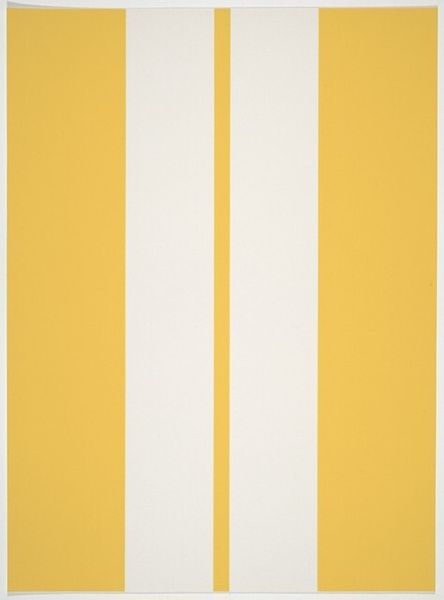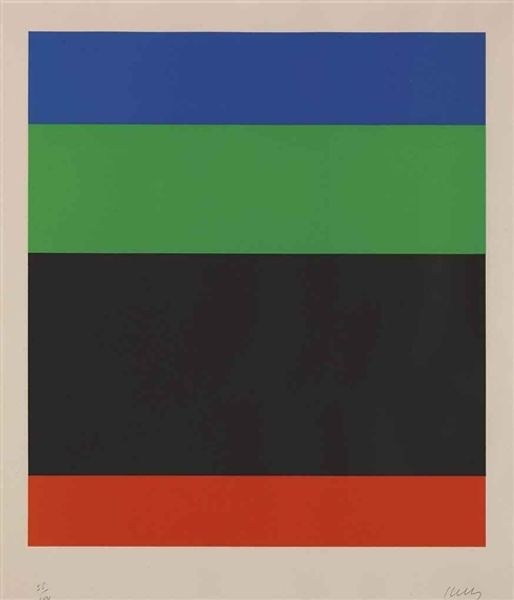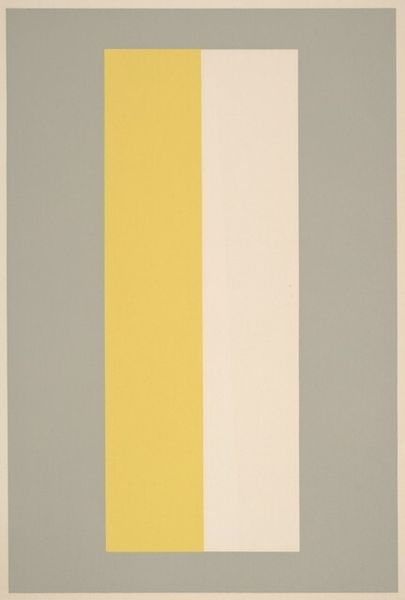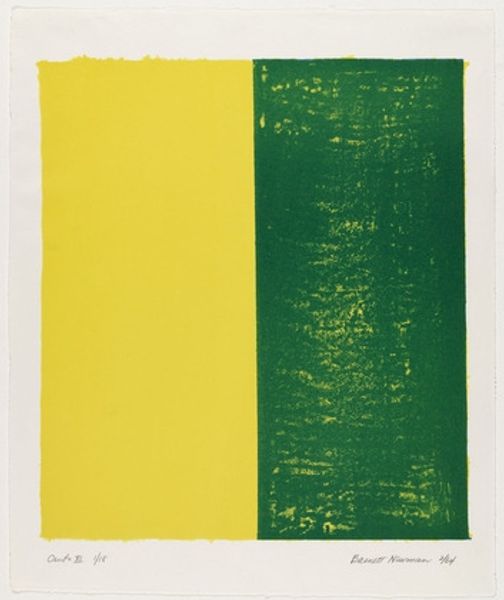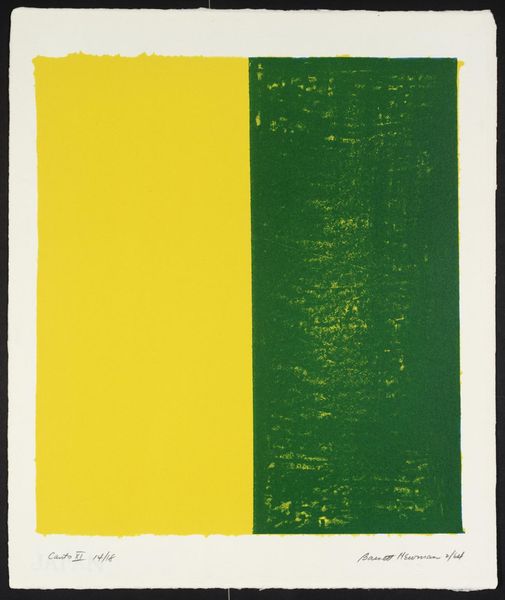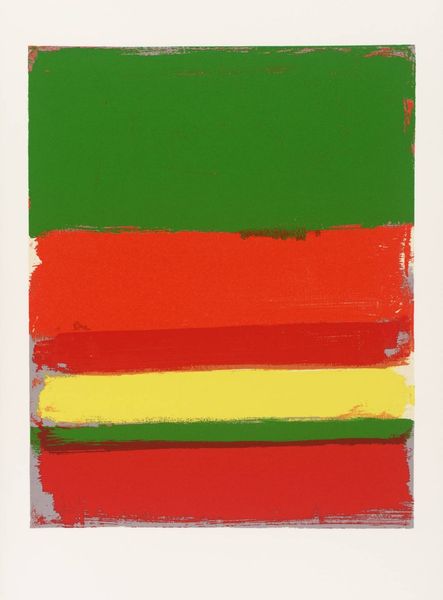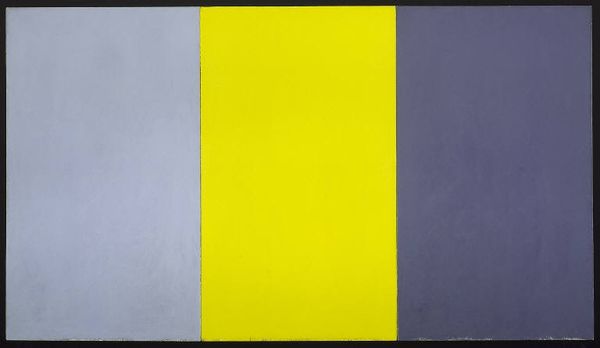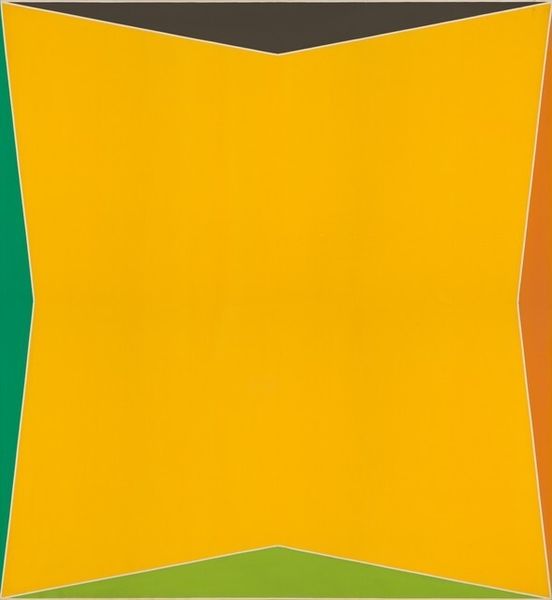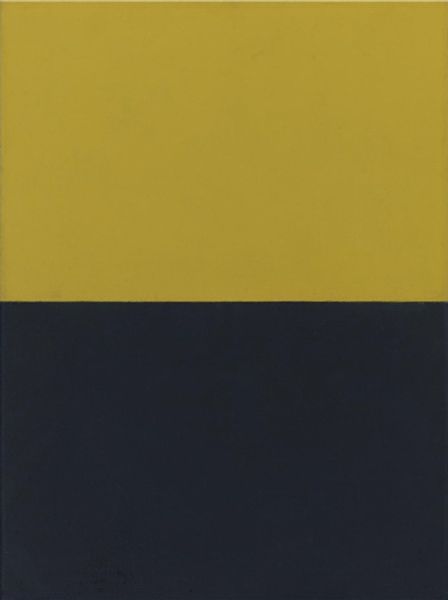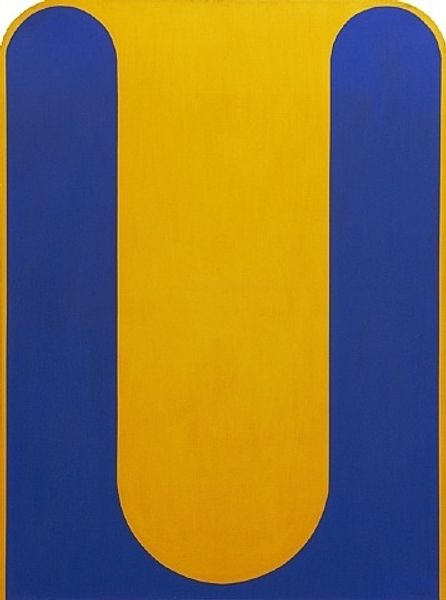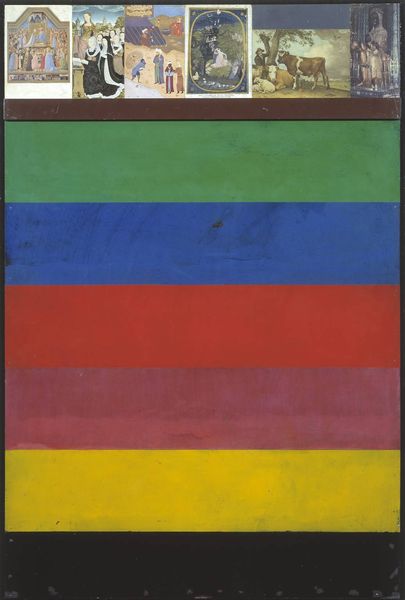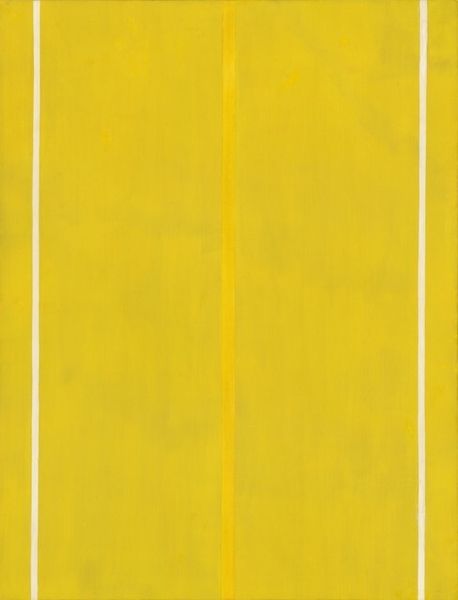
drawing
#
abstract-expressionism
#
drawing
#
minimalism
#
colour-field-painting
#
geometric
#
abstraction
#
modernism
#
hard-edge-painting
Dimensions: overall: 77.47 × 56.83 cm (30 1/2 × 22 3/8 in.)
Copyright: National Gallery of Art: CC0 1.0
Editor: This is an untitled drawing by Leon Polk Smith from 1950. It's strikingly simple - just a green rectangle alongside a yellow one. I’m struck by the almost electric vibrancy of these colors; they feel very modern, yet there's something almost primitive in their starkness. What do you see in this piece? Curator: I see a profound dialogue between forms and colors. The geometric shapes become symbols themselves. Consider, what does the pairing of yellow and green evoke in you? Think of nature, perhaps a field or sunlit foliage. Smith is not just presenting colors; he's activating cultural memories linked to those colors. Editor: That makes sense. I was focusing on the flatness of the colors themselves, the sheer surface. But you’re suggesting there’s more, a deeper cultural undercurrent? Curator: Absolutely. Smith, while part of the hard-edge painting movement, explores more than pure form. Note how the hard edges interact, creating a tension. Ask yourself: are these rectangles simply shapes, or do they hint at boundaries, connections, maybe even division within ourselves? The symbols hold layered emotional associations. Editor: So, even in something so abstract, there's room for symbolic reading, for layers of meaning accumulated over time? Curator: Precisely! Artists use symbolic vocabularies. The artist is using minimal means to trigger maximal associations within our minds. It is quite brilliant in its way! Editor: I never thought about abstract art that way before. It's interesting how colors we see everyday can hold hidden depths. Curator: Indeed! An image can compress so much cultural information. A minimalist work can also be a doorway to complex associations.
Comments
No comments
Be the first to comment and join the conversation on the ultimate creative platform.
